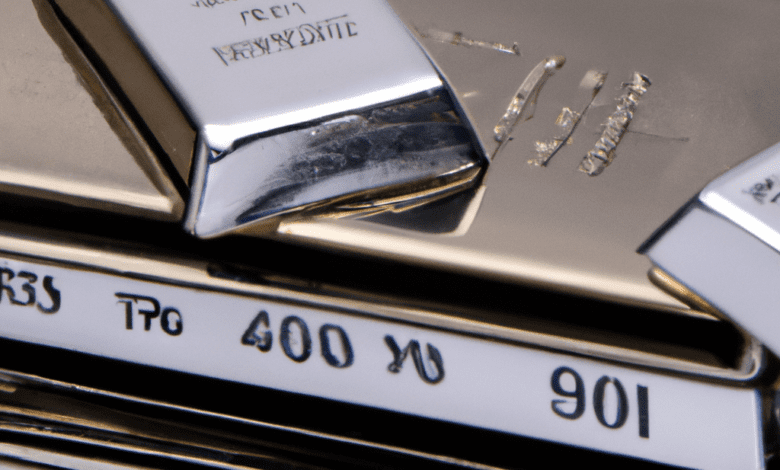Platinum vs. Palladium: An In-Depth Investment Guide to Precious Metals

In the world of precious metals, platinum and palladium have often been overshadowed by their more famous counterpart, gold. However, these two metals hold significant value in various industries and present unique investment opportunities. Both platinum and palladium are prized for their rarity and are essential components in automotive catalytic converters, electronics, and jewelry. But as investors seek to diversify their portfolios and hedge against economic uncertainties, the question arises: which metal offers a more promising investment opportunity?
In this article, we will delve into the fundamental properties and uses of platinum and palladium, exploring how these characteristics shape their market dynamics. We will then analyze historical performance and current market trends to provide a comparative perspective on their investment potential. Finally, we will assess the risks and rewards associated with investing in each metal, offering insights into their future outlook. Whether you are a seasoned investor or new to the world of precious metals, this comprehensive guide will equip you with the knowledge needed to make informed investment decisions.
- 1. **Understanding the Basics: Platinum vs. Palladium – Properties and Uses**
- 2. **Market Trends and Historical Performance: A Comparative Analysis**
- 3. **Investment Considerations: Risks, Returns, and Future Outlook for Platinum and Palladium**
1. **Understanding the Basics: Platinum vs. Palladium – Properties and Uses**
Platinum and palladium are both precious metals that belong to the platinum group, sharing a number of similarities in terms of their chemical properties and uses. However, they also exhibit distinct characteristics that influence their market dynamics and investment potential.
Platinum is a dense, malleable metal with a silvery-white appearance, known for its resistance to corrosion and tarnish. It has a high melting point, making it ideal for various industrial applications. Platinum is widely used in catalytic converters for automobiles, where it plays a crucial role in reducing harmful emissions. Additionally, it is utilized in jewelry, electronics, and medical devices due to its durability and hypoallergenic properties.
Palladium, on the other hand, is lighter and less dense than platinum, with a similar lustrous finish. It has gained significant popularity in recent years, particularly in the automotive industry, where it is increasingly used in catalytic converters, often as a substitute for platinum due to its efficiency in converting harmful gases into less harmful emissions. Besides automotive applications, palladium is also utilized in electronics, dentistry, and jewelry, though its presence in the latter is less prominent compared to platinum.
Both metals are considered precious and have intrinsic value, but their supply and demand dynamics differ markedly. Platinum has historically been more abundant in the market compared to palladium, but recent shifts in production, primarily due to geopolitical factors and mining challenges, have altered the balance. Furthermore, the increasing push for stricter emission regulations has driven up the demand for palladium, leading to significant price fluctuations.
Understanding the basics of platinum and palladium, including their properties and uses, is essential for investors looking to navigate the complexities of these metals. Each metal has its own unique investment profile, influenced by market trends, industrial demand, and economic factors, making it crucial for potential investors to weigh the benefits and risks associated with each option.
2. **Market Trends and Historical Performance: A Comparative Analysis**
When considering an investment in platinum versus palladium, understanding market trends and historical performance is crucial for making an informed decision. Both metals have distinct characteristics, uses, and market dynamics that influence their pricing and investment potential.
Historically, platinum has been regarded as the more prestigious of the two metals, often commanding a higher price due to its rarity and use in various industrial applications, particularly in jewelry and automotive catalytic converters. However, in recent years, the dynamics have shifted. Palladium, once overshadowed by platinum, has experienced significant price surges driven primarily by its essential role in the automotive industry, particularly in gasoline vehicle emissions control systems. This change has been stark, with palladium prices surpassing those of platinum since around 2018, marking a notable reversal of the historical norm.
Market trends indicate that the demand for palladium has been robust, fueled by stricter emissions regulations and the automotive industry's shift toward gasoline-powered vehicles. This has led to supply constraints, as palladium is primarily mined in a few countries, notably Russia and South Africa. Consequently, the metal's price has seen dramatic increases, often reaching all-time highs, while platinum's price has remained relatively stagnant or even declined, reflecting lower demand and higher supply levels.
Furthermore, the investment landscape for these metals has evolved, with palladium gaining traction among investors seeking exposure to the automotive sector and the broader push towards cleaner technologies. Conversely, platinum has struggled to maintain its appeal, partly due to its association with diesel engines, which have faced declining popularity due to environmental concerns. This has led to a divergence in investor sentiment, with palladium often viewed as the more aggressive investment choice.
Looking ahead, the future performance of both metals will be influenced by several factors, including technological advancements in automotive manufacturing, shifts in consumer preferences, and broader economic conditions. The rise of electric vehicles (EVs) poses a potential threat to palladium demand, as EVs do not require traditional catalytic converters. In contrast, platinum could see renewed interest if it becomes favored in new emission control technologies for hydrogen fuel cells or other applications.
In summary, the comparative analysis of market trends and historical performance reveals a complex landscape where palladium currently outshines platinum in terms of price and demand. However, the evolving nature of the automotive industry and broader economic factors will continue to shape the investment potential of both metals, making it essential for investors to stay informed about market developments and forecasts.
3. **Investment Considerations: Risks, Returns, and Future Outlook for Platinum and Palladium**
When evaluating platinum and palladium as investment options, several key factors must be considered, including risks, potential returns, and future market outlooks for both metals.
**Risks**: Both platinum and palladium are subject to market volatility, influenced by various factors such as industrial demand, geopolitical events, and changes in monetary policy. Platinum, primarily used in automotive catalytic converters, jewelry, and various industrial applications, faces risks tied to shifts in technology and consumer preferences. For instance, the rise of electric vehicles (EVs) may reduce demand for platinum in traditional combustion engines. Palladium, on the other hand, has seen a surge in demand primarily from the automotive sector, especially for gasoline engines. However, it too is vulnerable to market fluctuations, including potential regulatory changes aimed at reducing fossil fuel reliance.
**Returns**: Historically, both metals have demonstrated significant price movements, often driven by supply-demand dynamics. Palladium has outperformed platinum in recent years, largely due to tighter supply conditions and increasing automotive demand. As of late 2023, palladium has commanded higher prices than platinum, reflecting its status as a precious metal with industrial utility. However, investors should be aware that past performance does not guarantee future results. Platinum, while it may currently be undervalued compared to palladium, can present unique opportunities, especially if demand for its industrial applications revives or if it becomes a favored choice in investment portfolios as a hedge against inflation.
**Future Outlook**: The outlook for both metals is influenced by broader economic trends and technological advancements. Analysts believe that the transition to greener technologies could reshape the demand landscape for both metals. For platinum, its potential use in hydrogen fuel cells and as a cleaner alternative in catalytic converters may bolster future demand. Conversely, palladium’s reliance on traditional gasoline engines could lead to increased volatility if the automotive industry shifts significantly towards electric vehicles.
Investors should also consider the geopolitical implications of mining regions, as both metals are primarily sourced from a few key countries, notably South Africa and Russia. Political instability or regulatory changes in these regions could impact supply chains and, consequently, prices.
In conclusion, both platinum and palladium present unique investment considerations. While palladium has recently shown stronger performance, platinum may offer value as market conditions evolve. Investors should carefully weigh these factors against their individual risk tolerance and investment goals before making decisions in this dynamic market.
In conclusion, the decision between investing in platinum or palladium hinges on a variety of factors, including individual investment goals, risk tolerance, and market outlook. Both metals possess unique properties and uses that cater to different sectors, such as automotive and jewelry, influencing their demand and pricing dynamics. Historical performance data reveals that while palladium has enjoyed a remarkable surge in value in recent years, platinum’s lower price point and potential for recovery present a compelling case for investors seeking long-term gains.
As we navigate the complexities of the global economy and evolving market trends, it is crucial to consider the inherent risks associated with each metal. Palladium's reliance on the automotive industry for demand makes it vulnerable to shifts in technology and consumer preferences, while platinum's diverse applications could provide a more stable investment avenue.
Ultimately, the choice between platinum and palladium should be informed by thorough research and an understanding of the current market landscape. Investors are encouraged to weigh the potential returns against the associated risks, aligning their decisions with their financial objectives and market insights. By doing so, they can position themselves strategically within the precious metals market, taking advantage of the unique opportunities presented by both platinum and palladium.





